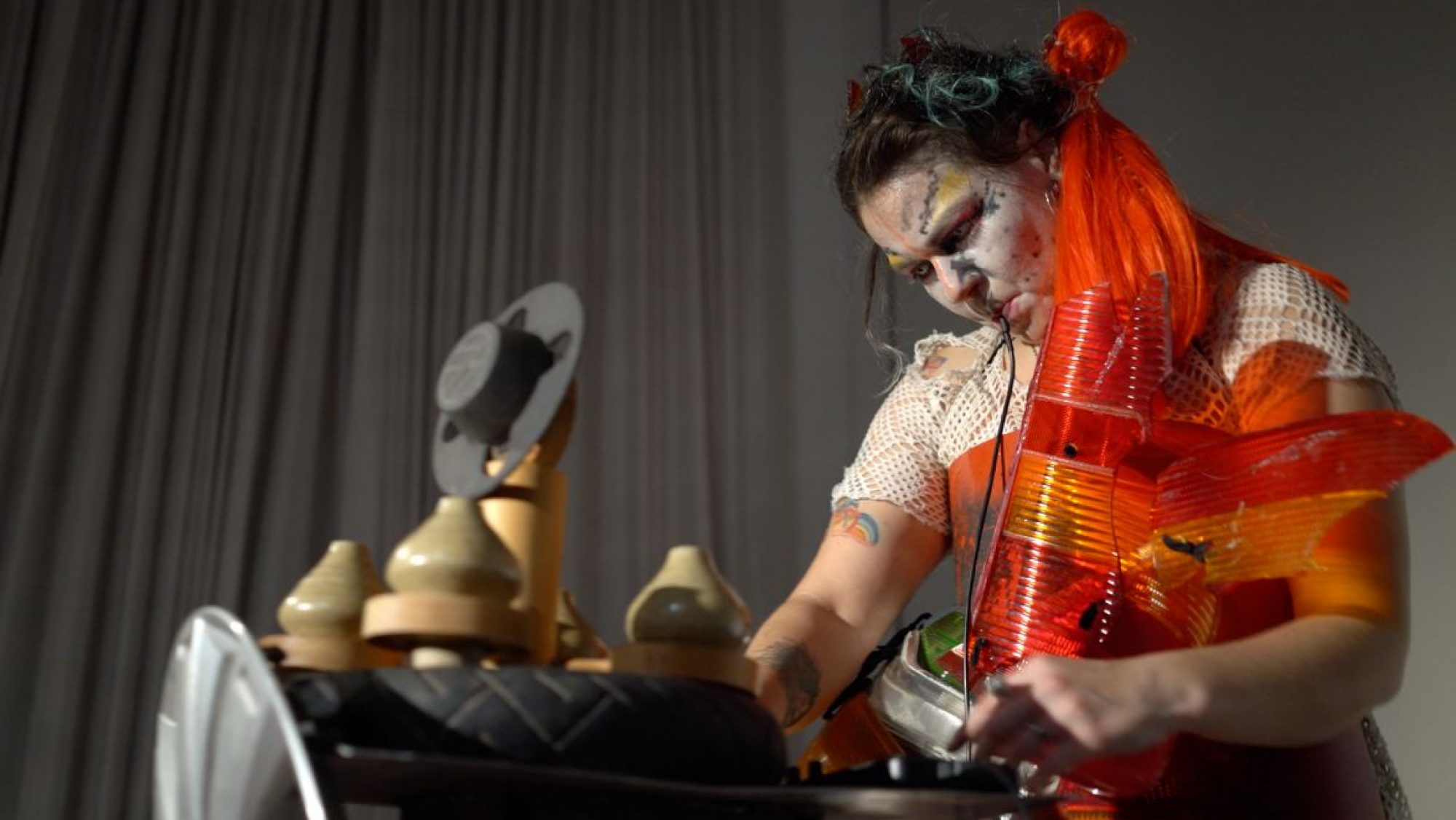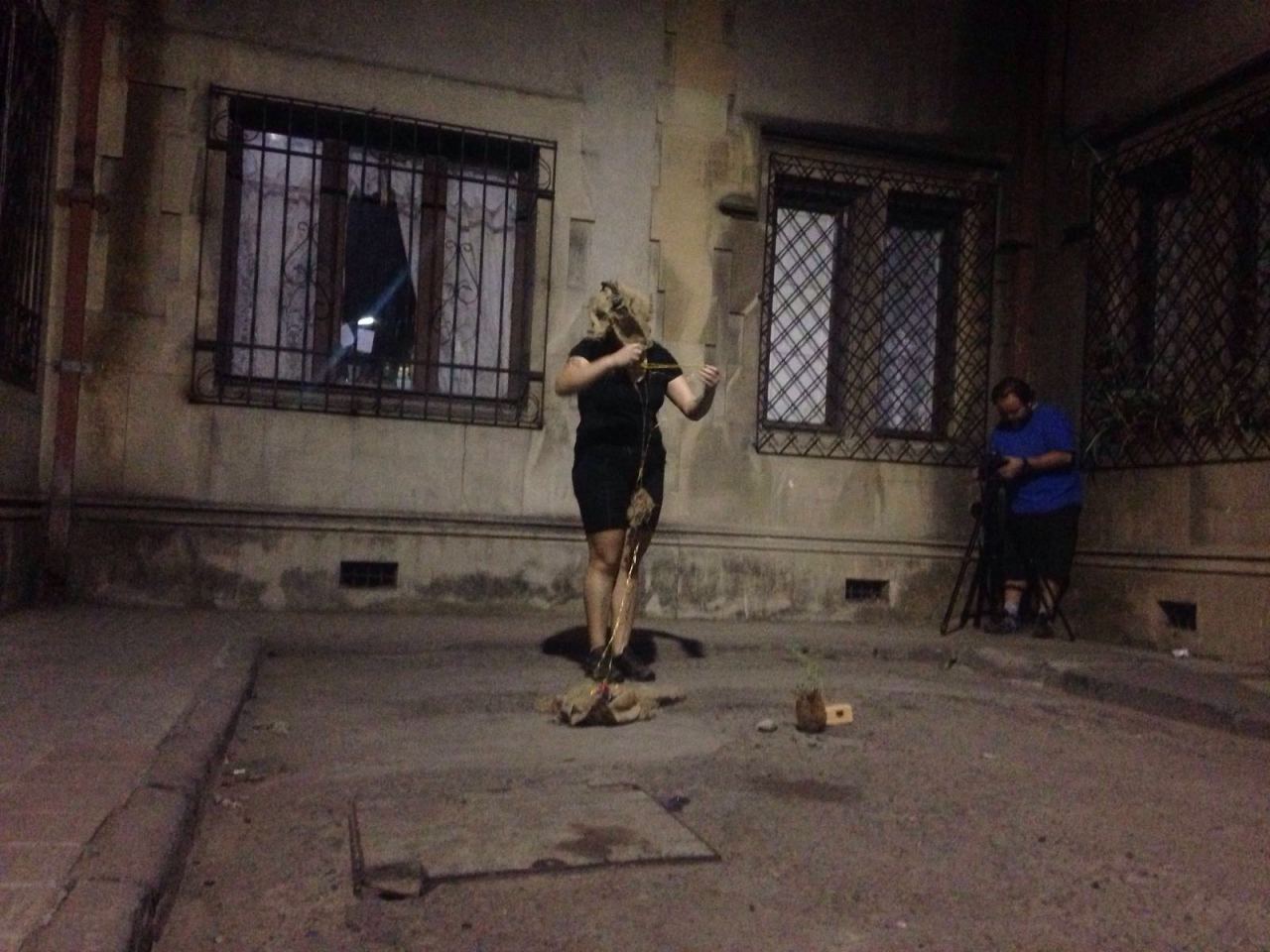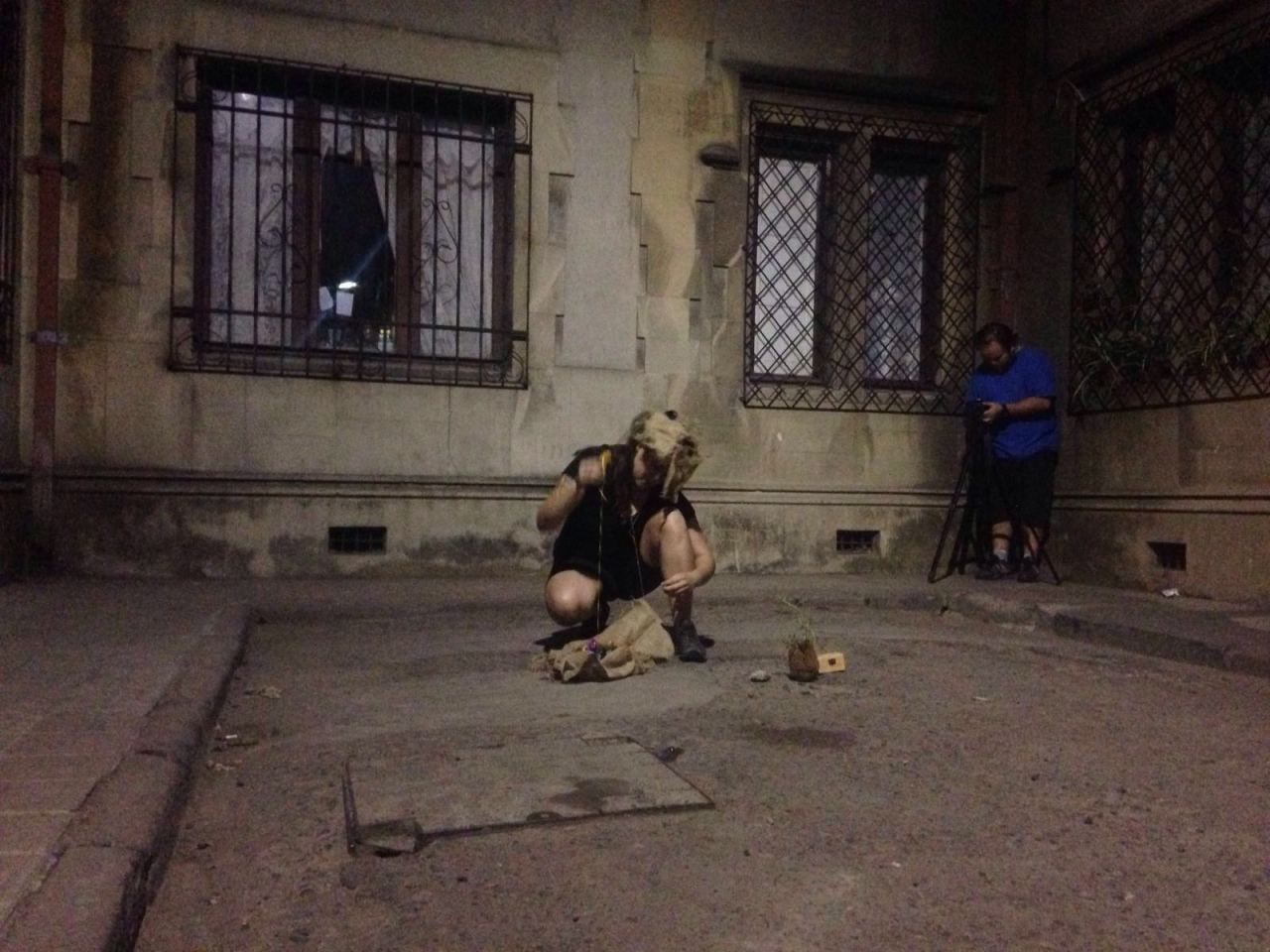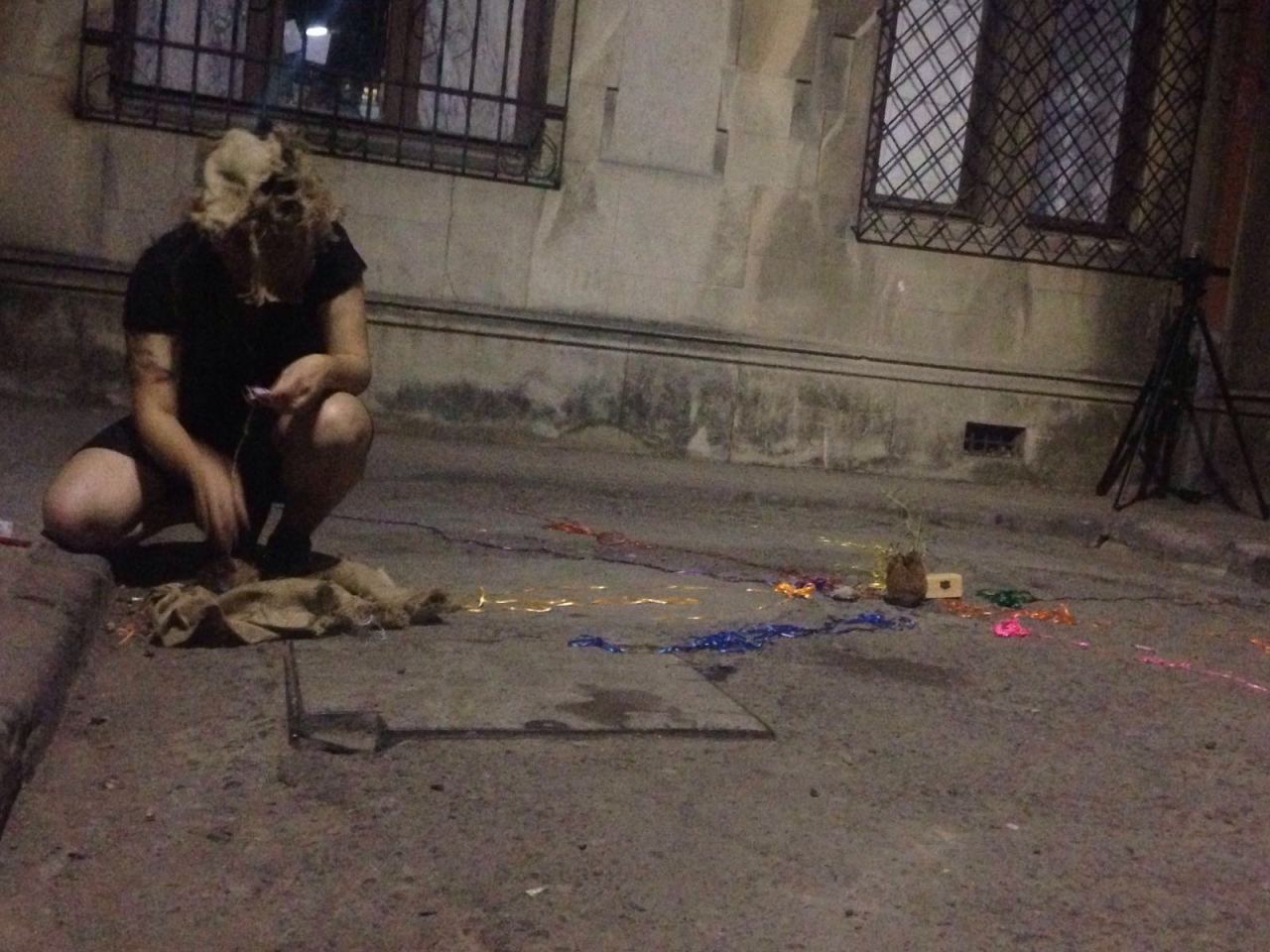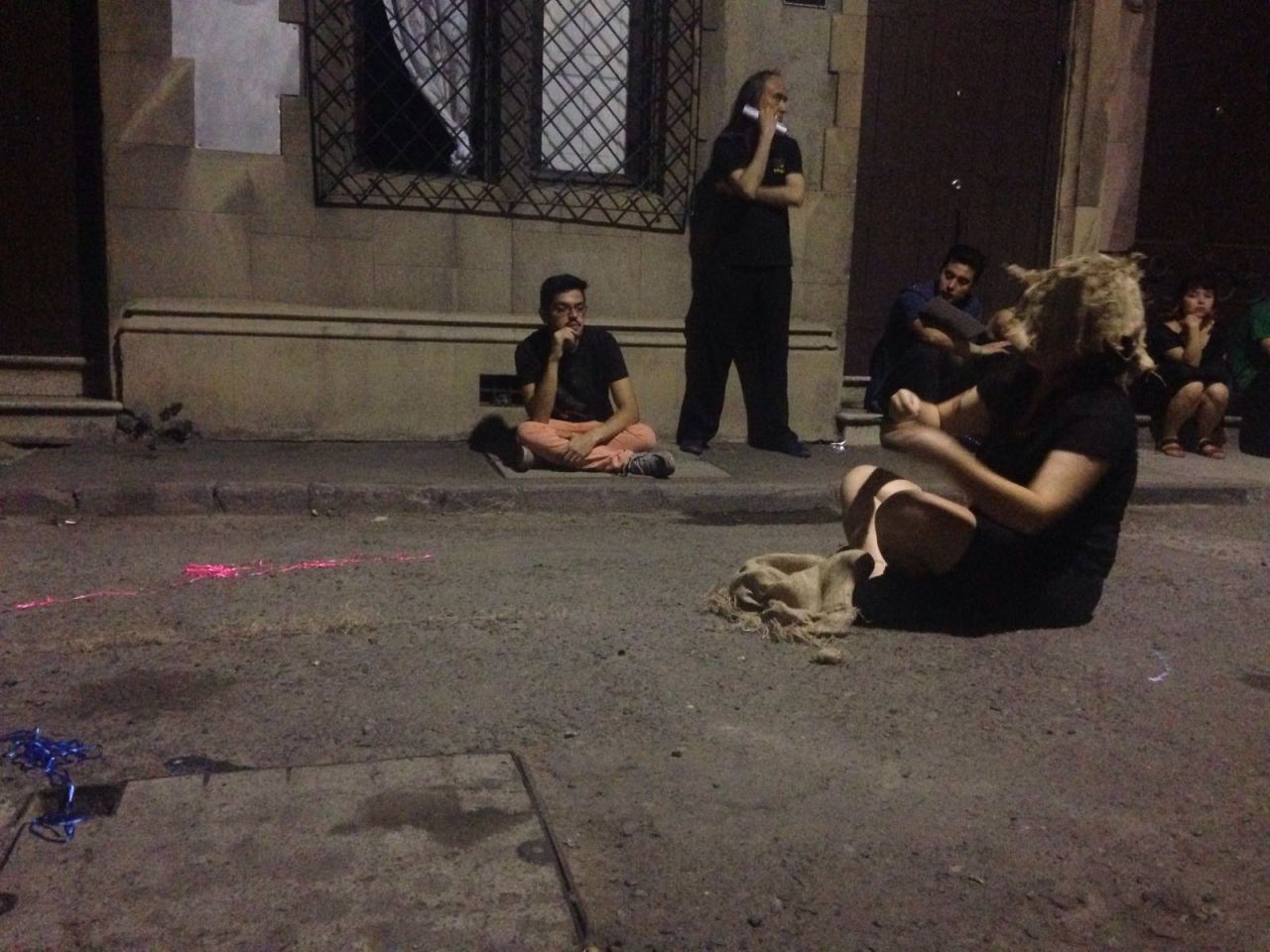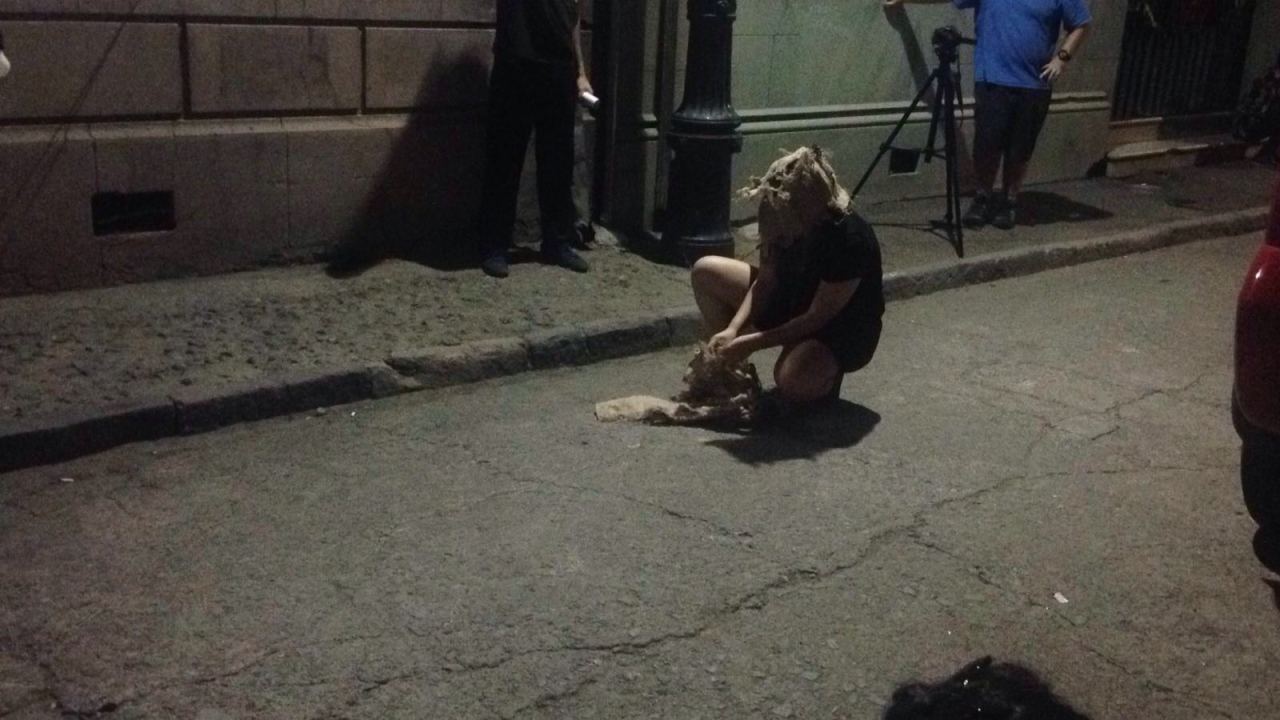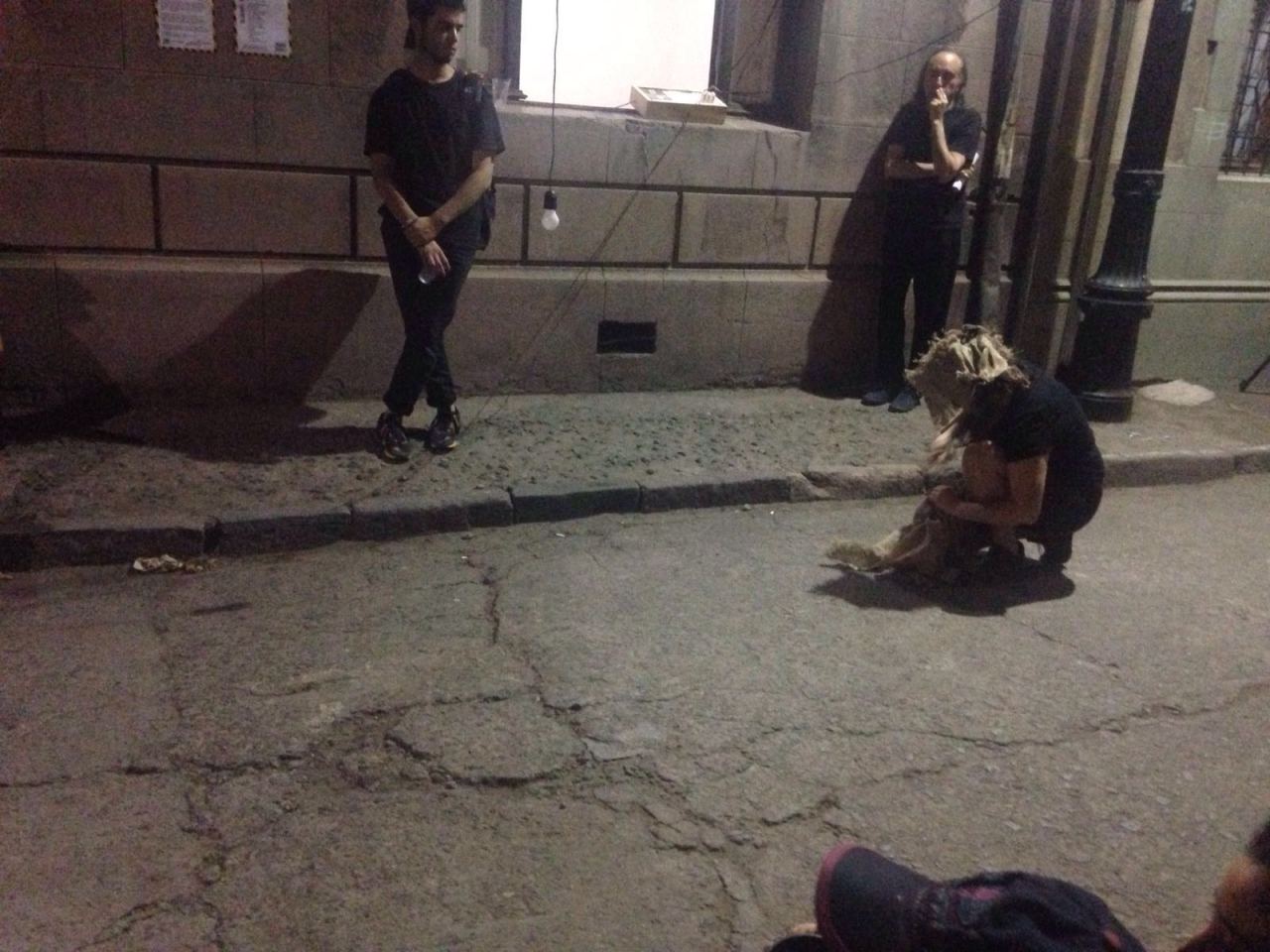This action was performed in Huérfanos alley, outside “El Cubo” gallery. It consisted in delimiting a line on the street, from start to finish. The first part of this line was marked by a circular ephemeral structure, made with coloured ribbons, in which centre there was a Kokedama (Japanese art of plant on moss), a closed chest, jingle bells and a mollusk picked up from Puchuncaví. Here, a trail was initiated from the thread generated by unweaving burlap. The unweaving was produced to the sound of a whistle, marking in this way a double trajectory. The whistle, also known as “pajarito”, emitted a sound in correlation to the body, the environment and the action of pulling the burlap, for the thread to come out. Thus, when I encounter myself with other bodies in action, both the burlap and the tone of the sound changed, generating a field of influence. The burlap acquired a sculptural and experiential character when picking up the encounter information, assuming different forms in its matrix. Finally, this mutant fabric was exposed at the end of the trail, along with the rest of the clothing.
Register: Ornella Raglianti
Post-production: Génesis Victoria
//
Brotar un recorrido
La acción, realizada en pasaje Huérfanos, a las afueras de la galería El Cubo, consistió en demarcar una línea en la calle, desde inicio a fin. El inicio del recorrido se marcó a partir de la construcción de una estructura circular efímera, realizada con cintas de colores, en cuyo centro residía una Kokedama (arte japonés de planta sobre musgo), un cofre cerrado, cascabeles y un molusco proveniente de Puchuncaví. Desde este centro se inició un recorrido a partir del hilo producido al des-hilvanar arpillera. El des-hilvanado se producía al son de un silbato dibujando de esta manera doblemente la trayectoria. El silbato conocido popularmente como “pajarito”, emitía su sonido en correlación con el cuerpo, el ambiente y el trabajo de tirar de la arpillera: de esta manera al encontrarme con otro cuerpo en acción tanto la arpillera como el sonido adquirían otro tono, un campo de afección. La arpillera, de esta manera, adquiría un carácter escultórico y experiencial al recoger la información del acontecimiento en la medida en que se formaban diferentes formas en su matriz: finalmente este mutante textil fue puesto al final del recorrido, junto con el resto del ropaje.
